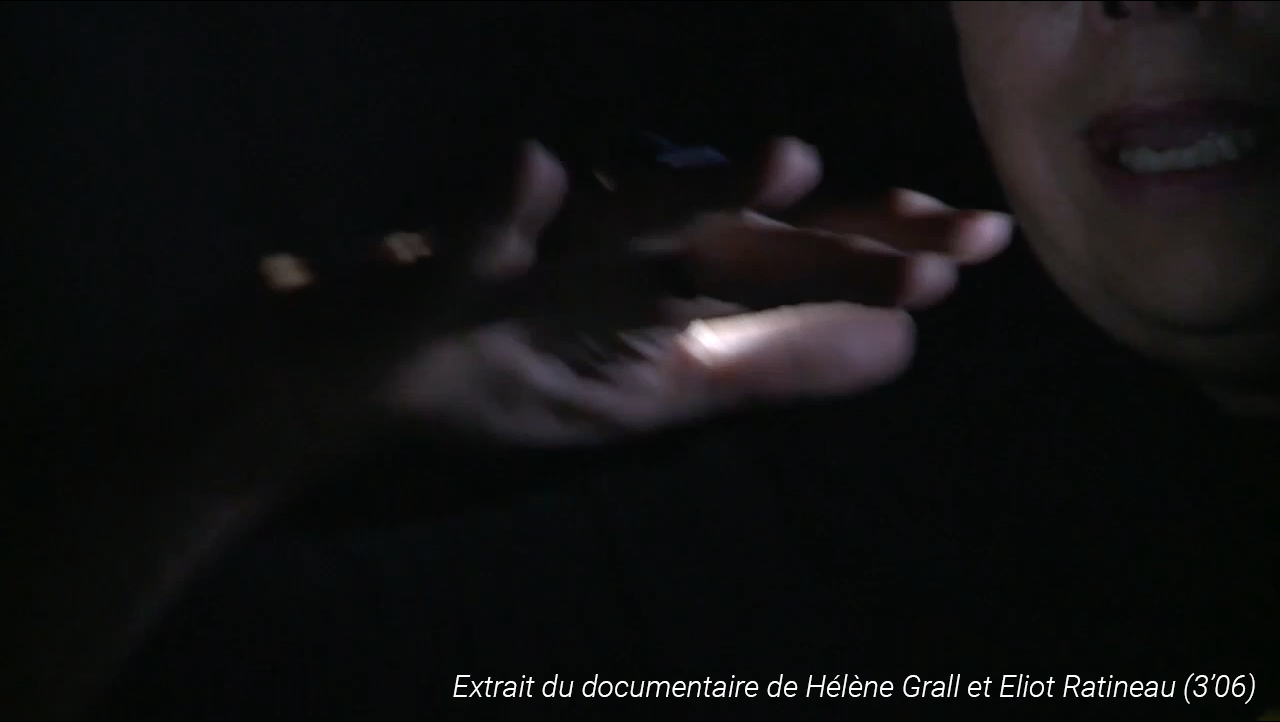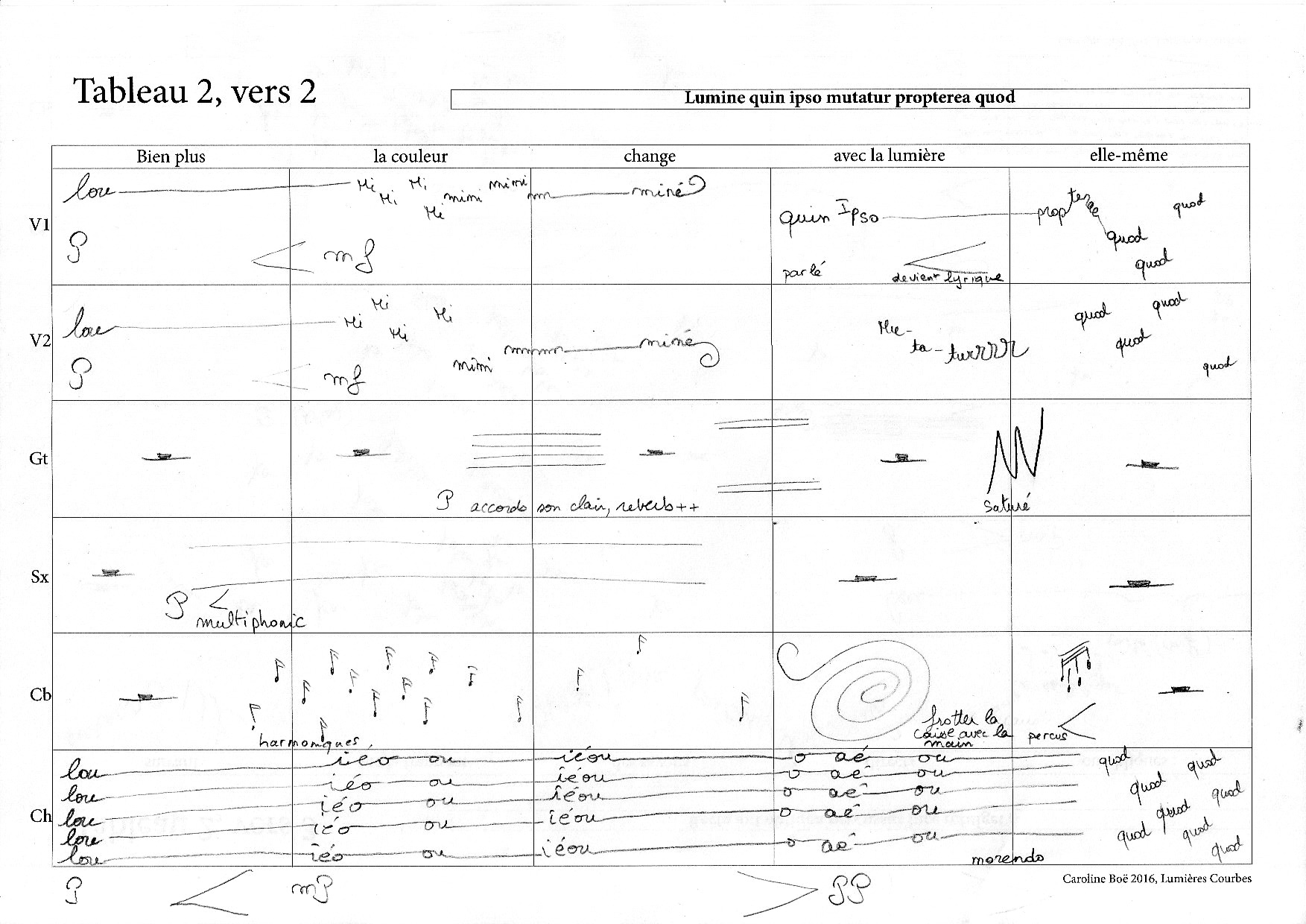Cité Radieuse of Marseille, Le Corbusier Building
Architectures Contemporaines Production, Aix-Marseille University With musicology students and inhabitants of the building. Direction Cati Delosme. Text by Lucretia.
Video : Film by Hélène Grall and Eliot Ratineau - Extract 3'06

Lumières Courbes evokes scientific news which hypothesizes that dark matter in the universe deviates trajectories. The notion of rectilinear radiation is therefore questionned.
Curved Lights in the plural speaks of this other hypothesis according to which several universes coexist. The conceptual interest of this project is to combine a historical heritage, the Cité Radieuse, architecture in dialogue with light, with scientific news.
Influenced by a work with composer-researcher Guy Reibel, as a composer I wanted to broaden his vocal playing experience to a search for instrumental playing. It is about putting the musician's body in motion, producing a spontaneous musical sound by encouraging the performers to take great liberties.
This is made possible by the writing of a graphic score, suggesting atmosphere and musical energy. Emancipated from the traditional score and its constraints, the musicians are transformed into dancers and actors. And from this choreographic theatricality the music will be born.
Some inhabitants of the Cité Radieuse participated in the creation by forming a choir. Vocal game workshops were offered to familiarize them with this new approach to music. A new artistic coexistence between professional musicians, students and amateurs has been established through an awareness of contemporary music in an everyday setting.
The musicians were equipped with indicator lights for bicycles, hung on different parts of their bodies. Unintentional play of light emerges as a direct transcription of the music being played.
The transdisciplinarity of this project (music, dance, theater, light effects) is subsequent to the intention: the search for spontaneity in contemporary music, often experienced by the public and by the performers as somewhat rigid music.
Press
"In a dark alcove on the 4th floor, some will-o'-the-wisps come alive: instruments and voices mingle ... Student-musicians and inhabitants of Le Corbusier, like an antique choir, take part in the creation of a work directed by Caroline Boë: "Curved lights" ... great work! ". Jacques Freschel (Zibeline of May 30, 2016).
Score (extract)

Performed by Clara Scozzaro (Lyric singer), Clément Baudier (Saxophones), Camille Carpentier (Electric guitar), Nicolas Fleury (Double bass), the choir of the inhabitants of the Cité Radieuse (Geneviève Bonino, Jacqueline Boyer, Guy Durand, Eliane Beltran, Gisele Moreau, Danielle Sigaut, Gerhard Jacquet, under the direction of Cati Delosme.
Text
Texte of Lucreece, De Rerum Natura, Livre II, 795 to 809
Praeterea quoniam nequeunt sine luce colores esse neque in lucem existunt primordia rerum, scire licet quam sint nullo uelata colore; qualis enim caecis poterit color esse tenebris ? Lumine quin ipso mutatur propterea quod
recta aut obliqua percussus luce refulget; pluma columbarum quo pacto in sole uidetur, quae sita ceruices circum collumque coronat; namque alias fit uti claro sit rubra pyropo, inter dum quodam sensu fit uti uideatur inter caeruleum uiridis miscere zmaragdos. caudaque pauonis, larga cum luce repleta est, consimili mutat ratione obuersa colores; qui quoniam quodam gignuntur luminis ictu, scire licet, sine eo fieri non posse putandum est.
Besides, there can be no color without light, and atoms do not occur in light; it is therefore obvious that no color is coated on them. What kind of color can there be in blind darkness? What is more, the color changes with the light itself, according to whether direct or oblique rays strike it; thus shimmers in the sun the plumage collar which adorns the neck and neck of the dove; sometimes it has the fires of the ruby, sometimes it gives us the impression of mixing the blue of the firmament with the green of the emerald. Likewise the peacock's tail, when bathed in generous light, changes color depending on exposure. So, it is on the fall of the rays of light that colors depend, and it is naturally not conceivable that they can exist without light.